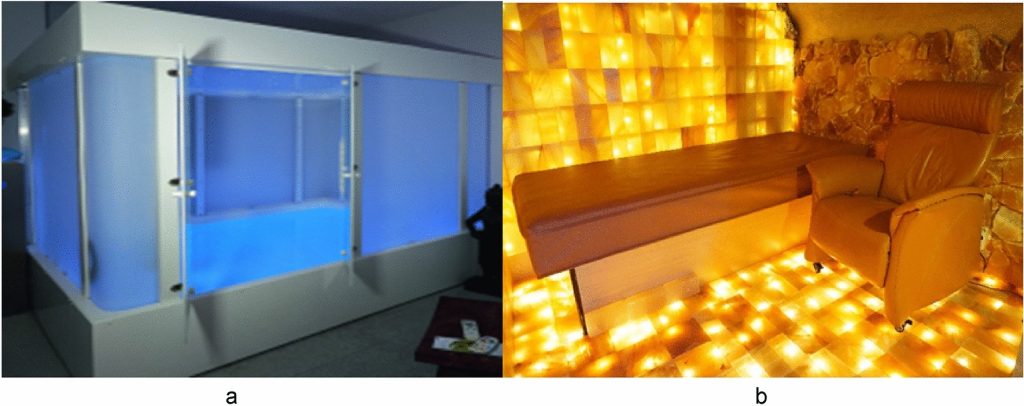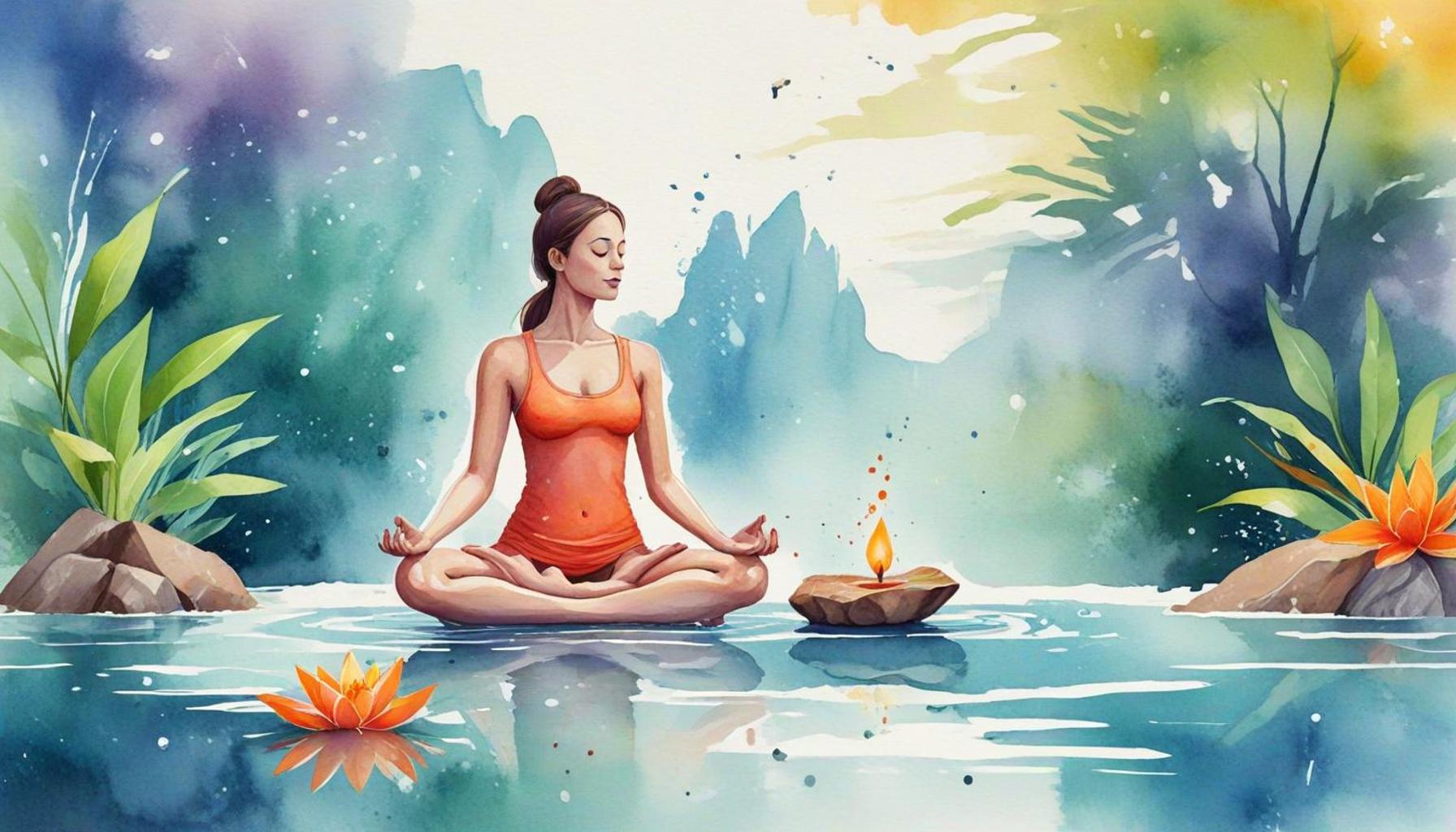The Influence of Water Temperature on Meditation Experiences: Finding the Ideal Point for Relaxation

The Relationship Between Water Temperature and Meditation
Water temperature plays a pivotal role in shaping the meditation experience. While many practitioners rely on traditional methods, the integration of water elements can enhance relaxation and mindfulness. Understanding how temperature impacts meditation can lead to improved practices and deeper connections.
Why Is Water Temperature Important?
- Physical Comfort: The right temperature can greatly affect one’s physical comfort during meditation. When submerged in water that is too cold, the body may tense up in response to the chill, which diverts the mind from achieving a focused meditative state. Conversely, warm water envelops the body in soothing warmth, helping to dissipate any discomfort and enabling practitioners to better concentrate on their mental and spiritual journey.
- Psycho-Emotional Effects: Water temperature can evoke various psychological responses. Warm water often creates a nurturing atmosphere, reminiscent of motherly comfort, which can instill a sense of safety and promote vulnerability during meditation. This sense of security is essential for deep introspection. Conversely, cooler temperatures can invigorate the senses, increasing alertness and clarity of thought, which some may find beneficial for mindfulness practices where awareness is paramount.
- Cultural Practices: Nigeria is rich in diverse cultural practices involving water, such as traditional cleansing rituals by the riverbanks. These rituals, which might include bathing in sacred rivers, resonate with the natural elements and emphasize the significance of water in spiritual pursuits. Such practices underline the importance of the surrounding environment in enhancing meditation, suggesting that the community places inherent value on the connection between water and spiritual healing.
As we delve deeper into the nuances of water temperature, we will explore how warm, cool, and ambient temperatures influence various aspects of meditation. For instance, the ideal temperature range for warm water meditation is generally considered to be between 35°C to 38°C (95°F to 100°F), which is pleasantly soothing without becoming too hot for comfort. Cool water, around 20°C to 22°C (68°F to 72°F), can be refreshing and energizing. Understanding these temperature spectrums can help practitioners tailor their routines according to their meditation goals.
Moreover, factors such as the setting and weather conditions also play a significant role in how water temperature is experienced. In Nigeria, where the climate can be warm and humid, having access to cooler water can be particularly refreshing. Therefore, finding a tranquil space near a body of water, such as a stream or river, can enhance meditation experiences, allowing practitioners to harness the natural cooling effect while connecting with the environment.
Get Ready to Dive In!
Join us on this journey to discover the perfect temperature for your meditation rituals, tailored specifically for personal growth and tranquility. Understand how even subtle variations in water temperature can affect your practice, whether it’s a calming bath or a refreshing dip, and how these dynamics could redefine your approach to achieving inner peace.
SEE ALSO: Click here to read another article

Exploring the Warm Embrace of Water
Water’s inviting warmth has long been associated with relaxation. For many, immersion in warm water offers not just a soothing sensation but an unparalleled opportunity to delve into self-reflection. As the body adjusts to the heat, muscles release tension, and the mind gently softens its hold on everyday worries. This transformative experience fosters a meditative environment that is crucial for accessing deeper states of consciousness.
The ideal temperature for water meditation often falls between 35°C to 38°C (95°F to 100°F). This range not only comforts the body but also aligns with the principles of hydrotherapy, where such temperatures are known to promote relaxation and relieve stress. In Nigerian practices, many individuals find that soaking in warm water, particularly during evening rituals, effectively enhances their ability to meditate. The cumulative effect can lead to insights that might remain elusive in cooler conditions.
Benefits of Warm Water Meditation
- Enhanced Relaxation: When submerged in warm water, the body is enveloped in a cocoon of tranquility, minimizing distractions and facilitating a flow of energy that blossoms into mindfulness.
- Improved Circulation: Warm water stimulates blood flow, which can help clear any physical blockages affecting one’s ability to relax, making meditation not just a mental but a holistic experience.
- Stress Relief: The warmth acts as a natural sedative, allowing the mind to drift into a state of calm. Nigerian herbal infusions can further enhance this experience, connecting the practitioner with the rich traditions of local healing.
Moreover, cultural aspects play a significant role in the experience of water meditation in Nigeria. The country’s multifaceted traditions often emphasize the importance of water as a cleansing and nurturing element. Bathing rituals that involve warm water can symbolize not just physical cleansing but a spiritual renewal, making them especially potent for meditation.
However, it is crucial to strike the right balance; water that is excessively hot can lead to discomfort, detracting from the meditative experience. Practitioners should always be mindful of their own comfort levels, adjusting the water temperature as needed. It fosters a conducive space for meditation and personal growth.
The Refreshing Affects of Cooler Waters
On the other end of the spectrum, cooler water can invigorate both the body and mind, presenting an alternative pathway to meditation. Cooler temperatures—ranging from 20°C to 22°C (68°F to 72°F)—can awaken the senses, providing a different kind of clarity and alertness ideal for mindfulness practices. In the humid climates of Nigeria, a refreshing dip in cool waters often not only revitalizes the body but also clears the mind, enabling practitioners to cultivate acute awareness.
As we navigate these intriguing dimensions of water temperature and its influence on meditation, we set the stage for a profound exploration of how our surroundings can elevate personal practices. Adapting water temperature to your meditation routine can be a game-changer—both for experienced practitioners and newcomers alike. Finding that sweet spot could lead to new realms of inner peace and tranquility.
| Category | Advantages |
|---|---|
| Warm Water Meditation | Enhanced Relaxation: Warm water temperatures can provide a soothing experience, promoting muscle relaxation and reducing stress levels. |
| Cool Water Meditation | Increased Alertness: Cool water can invigorate the senses, leading to heightened awareness and improved focus during mindfulness practices. |
| Thermal Regulation | Body Temperature Balance: Meditating in water at the right temperature helps maintain optimal body temperature, enhancing the meditation experience. |
| Personal Preference | Customized Experience: Individuals might find different water temperatures pleasurable, enabling personalized meditation sessions that resonate deeply. |
Exploring the influence of water temperature on meditation not only enhances the overall experience but also acknowledges each person’s unique preferences and physiological responses. When integrated thoughtfully into meditation practices, both warm and cool water temperatures can significantly amplify relaxation, focus, and mindfulness. Incorporating the right water temperature might be the key to unlocking a deeper meditation experience that resonates with one’s personal journey toward peace and tranquility. By understanding the science and potential benefits behind water temperature, practitioners can craft sessions that genuinely nurture both body and mind, allowing for a more holistic approach to well-being. The next segment will delve deeper into meditation techniques and their synergistic relationship with water temperatures, offering practical guidance for those seeking the perfect balance for their meditative practices.
SEE ALSO: Click here to read another article
Unveiling the Cool Clarity of Water
In contrast to the warm embrace of heated waters, cool water meditation can herald a fresh perspective on mindfulness. As temperatures dip between 20°C and 22°C (68°F to 72°F), practitioners may experience a unique form of alertness, awakening both the body and the senses. This invigorating stimulation is often appreciated in Nigeria’s tropical climates, where a refreshing splash can provide respite from the heat, while also offering an opportunity for mental relaxation and enhanced focus.
The science behind cooler water’s impact on the body is grounded in its *thermoregulatory benefits*. When submerged in cooler temperatures, the body reacts by tightening blood vessels temporarily, ensuring improved circulation upon exiting the water. This process can further help individuals tap into a heightened state of awareness, making it an excellent option for mindfulness practices. Many Nigerians have discovered that early morning swims in cooler waters can invigorate their spirits and transform their mental states, ultimately leading to clearer thoughts during meditation sessions.
Reimagining Mindfulness with Cool Waters
- Heightened Alertness: Cool water can promote a state of alertness, making it easier for practitioners to focus on their breathing and be present in the moment. This revitalization can be particularly beneficial for early risers seeking to center their thoughts for the day ahead.
- Refreshing Energy Flow: The cool sensation can initiate a flow of energy that stimulates creativity and productivity. This is in line with traditional African cultural practices, where water is often considered a source of energy and life.
- Enhanced Immune Response: Cool water can also stimulate the immune system, providing additional health benefits that contribute to overall well-being, which is essential for maintaining mental health and a conducive meditation practice.
As practitioners explore the benefits of cooler waters, it’s important to consider their personal comfort levels and preferences. While cool water may invigorate, excessively cold temperatures can also lead to discomfort, redirecting the focus when the goal is inner peace. Some individuals may choose to implement a gradual acclimatization approach, transitioning from warm to cool water through temperature variation methods, which can offer a bridge into a refreshing experience.
In Nigeria, spiritual leaders often discuss the importance of environmental harmony in meditation practices. Many people find that engaging with cool bodies of water such as rivers or lakes not only helps with meditation but also connects them deeply to nature. This relationship can enhance their overall mindfulness experience. The gentle lapping of waves or the sound of flowing water can become an integral part of the meditation practice, guiding individuals into deeper states of concentration.
Combining Temperatures for Diverse Experiences
Interestingly, innovative practitioners have begun to explore the combination of warm and cool water practices. Alternating between warm baths and quick dips in cooler water can create a unique flow that stimulates the body while maintaining a balanced meditative experience. This method, known as contrast hydrotherapy, is slowly gaining traction as individuals seek to find their ideal temperature for relaxation. In such practices, participants report feeling a profound sense of rejuvenation, resembling the feeling of recharging one’s mental and physical batteries.
Ultimately, the journey of discovering the perfect water temperature for meditation is personal and varies from individual to individual. Engaging thoughtfully with different temperatures not only enhances meditation practices but also allows for deeper self-exploration. Such an approach to water meditation may lead to insights that resonate within the cultural and physical landscape of Nigeria, enriching personal experiences and fostering psychic balance.
YOU MAY ALSO LIKE: Read read another article
Conclusion: Embracing the Fluidity of Meditation
As our exploration of water temperature’s influence on meditation experiences comes to a close, it is clear that the relationship between temperature, mindfulness, and personal well-being is both intricate and deeply personal. From the soothing warmth of heated waters to the refreshing jolt of cool sensations, practitioners across Nigeria and beyond are finding their ideal points of relaxation that resonate with their unique mental and physiological needs.
The assorted benefits of water temperature on meditation are noteworthy. Warm waters may promote relaxation and comfort, facilitating a soothing meditative state, while cool waters can enhance alertness, stimulate creativity, and invigorate the senses. The traditional Nigerian practice of engaging with natural water sources, such as rivers and lakes, further emphasizes this connection to nature and the profound effect it can have on mindfulness. Furthermore, the exploration of contrasting warm and cool temperatures in meditation opens up new pathways to greater self-awareness and rejuvenation.
Ultimately, the journey to discover the optimum temperature for meditation is highly individualized, calling for an open mindset and a willingness to experiment. By recognizing and understanding the impact that water temperature can have on our meditation experiences, we are better equipped to enhance our practices and foster a deeper connection with ourselves and our environments. As we continue to navigate this fluid landscape of mindfulness, let adaptability be our guiding principle, encouraging us to embrace the diverse temperatures that nurture our mental and spiritual well-being.


